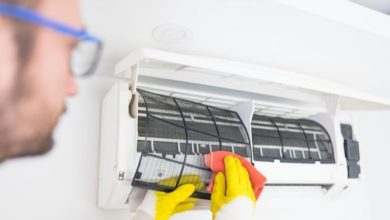Renovating a Historic Home in Dallas Texas | Here’s Everything You Need to Know

Dealing with old structures is no easy task to undertake. A lot has changed in the past century or so. Smart home and energy-efficient materials and appliances have improved the quality of life.
While renovating historic homes can bring a lot of surprises down the road, a renovation done right can turn an outdated structure into your dream home in no time.
Sounds challenging?
In today’s post, we’re going to help you understand everything you need to know about historic houses, their renovation, tips and tricks, and more. Because there’s so much to discuss, let’s dive straight in…
What are the Pros and Cons of Investing in a Historic Property in Texas?
Pros
- Historic homes look different than other modern properties available in town
- You may qualify for tax incentives
- They look absolutely classy and elegant (after renovation)
- They have a great resale value
- Stepping inside an old construction is like going back in time. They offer plenty of character and grace
- You’re helping with keeping the history alive
- They’re available in a wide range of architectural styles
- You can go as creative as you want
Cons
- In most cases, you’re not allowed to alter square footage when restoring/renovating an old construction
- Renovation and maintenance can be costly than modern constructions
- You might need to face restrictions when trying to reconstruct or rebuild the roof
- Historic homes may require lots of work
- You might require to follow strict construction guidelines
- Your insurance may be costly
Tips for Renovating a Historic Home in Dallas, Texas
Start Small
Renovating a historic house isn’t for the faint of heart. Regardless of its size and location, a historic property will need lots of upgrades and renovations. That means you’re going to face a lot of trouble if you’re on a tight budget.
The first rule is to weigh the renovation cost against your property’s resale value.
If you have a limited budget, then search for small properties. Instead of renovating every bit of it, stick to the essentials. Try to preserve the timeless look and architecture of the building as much as possible. This will save you both time and money. Also, you would be able to preserve the classic appeal of your home.
Hire the Best Custom Home Builder in Dallas, Texas
Look for the best Dallas custom home builders who can also help you with the inspection part. Check out your local listings and search for companies with experience in historic preservation.
Doing so will help you get expert advice. Also, they can tell you what exactly needs to be done in order to breathe life into your historical construct.
Research the Home’s History
Try to jot down as much information as possible about your purchase. This includes details about materials and age locale. Gather old photos and also talk with the past owners if possible.
Start with the Roof, Windows, and Water Damage
While it may be tempting to start your renovation project with flooring, paint, kitchen, and bathroom renovation, the first few steps should be practical rather than cosmetic.
Start your project by fixing things that affect the integrity and overall structure of your house. Yes, you guessed that right. We’re talking about the roof, windows, and any other water damages you find in your home.
Remember, water damage in a historic structure can be alarming. It can weaken the overall structure of the house. Also, bugs and insects love the wet environment.
Make a Historic House More Energy-Efficient
The biggest issue with older homes is that they’re less energy efficient. Here are a few minor (affordable) upgrades you can do to make your historic house more energy-efficient.
- Replace old bulbs with LEDs
- Replace outdated toilets with the ones that use less water
- Insulate your property by replacing old doors and windows
Prioritize Options
Renovating an old building doesn’t mean you have to replace everything. Remember, you have invested in historical construction because timeless constructs and classic home architecture appeals to you.
So, try to preserve whatever you can. Only work on the areas that need major upgrades.
Over to You…
Renovating a historic home isn’t for everyone.
Before investing in any property, make sure to keep the pros and cons in mind. Instead of throwing your money in any random property, it is important to get it checked by an experienced home builder or property inspector who can guide you about what you should or shouldn’t expect from your upcoming renovation.
If the perks of renovating an older home outweigh the barriers and costs of possible repairs and inflexible construction guidelines, only then can you think about taking a risk.
It is also essential to understand that historic homes are usually considered “high maintenance.” But you can easily avoid this cost if you execute your renovations wisely.





